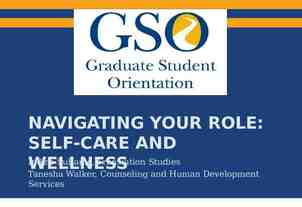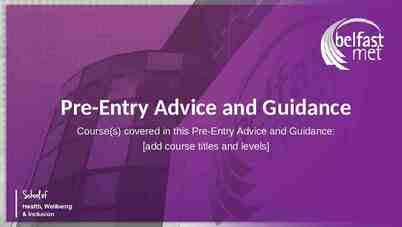The Benefits of Test-optional Admission (Stuent Name)
10 Slides2.66 MB
The Benefits of Test-optional Admission (Stuent Name)
“How to Improve Your SAT Score by 100 Points in a Month” “Top 10 Act Tips” “Best SAT prep Book” Solution ! ? Yes Schools should go test-optional
History of Test-optional Movement “SAT is distorting educational priorities and practices.” Suggest that “we no longer the SAT 1 for students applying to UC.” --American Council on Education, 2001 (Epstein) Richard Atkinson President of University of California Bates College Study on Test-optional Admission (Started Test-optional in 1984) A slight difference of graduation rates and GPA between submitters and non-submitters The number of applications increased Half of black and Hispanic applicants did not submit test scores --National Association for College Admissions Counseling, 2005 (Epstein) Bates College
More than 1000 colleges adopt test-optional admission today. (“ACT/SAT Test-Optional List Tops 1,000 Colleges, Universities”)
Benefits of Test-optional for Students More options for students to prove their academic performances George Washington University Requirement for Application (“First-Year Application Process”) students’ high school GPA academic background high school course works extracurricular activities recommendation letters High school GPAs reflect students academic abilities more accurately (O’Shaughnessy) Reduce Stress for students who with strong academic performance but aren’t good test-takers
Benefits of Test-optional for Schools Increasing diversity & Expanding application pool Doubled its applicant pool since making testing optional Increased application rates from all the subgroups: U.S. citizens of color, international citizens, low-income or blue collar students (Epstein) Total number of the applications increased 9% in 2014 More Hispanic and black freshmen were admitted, 940 Hispanic and black freshmen in 2014 compared with 695 in 2013 (Simon) Wake Forest University – Students from minority groups had increased 4% by 2015 (Simon)
Other Benefits of Test-optional Relieve students’ financial burden & create a fairer admission process Fees of SAT (“Fees”) Registration fee : 47.5 and 64.5 (with essay) Change the date of the test : 29 Additional score report : 12 each Fees of SAT Prep Courses (Buchmann et al.) Classroom courses : 1000 to 1200 Private tutoring services : from 1500 to 6900
Counterclaims The motives of schools go test-optional were not innocent Schools which go test-optional may have a higher average test score and look more selective in school ranking. Schools’ motives hardly matter (Edmonds) . Hard for non-submitters to get merit-based financial aid Some test-optional schools still required students to submit standardized scores for merit-based financial aid. It is school’s responsibility to find a new way to measure students’ merit based financial aid or offer more other aid. University of Chicago offer more financial aid program for the students from low income families, like free institution fee for all the admitted students with family income less than 12,500 (Kmetz)
Conclusions Going to college is one of the important turning points in many people’ lives. Many people change their lives and gain social mobility because of their college education. Since standardized test is usually associated with family incomes, it limits opportunities of social mobility for those students from ethnic minority groups and low income families. Therefore, the first step to help those students is to remove the standardized test requirement and set up multiple ways to measure students’ academic performance and other abilities. By doing so, students can focus on self-development rather than spending time and money to improve a test score. “We want students to understand the application does not define you – you define the application.” -- James G. Nondorf
Works Cited “ACT/SAT Test-Optional List Tops 1,000 Colleges, Universities.” Fair Test, 9 January 2018. https://www.fairtest.org/actsat-testoptional-list-tops-1000-colleges-univer. Buchmann, Claudia, et al. “Shadow Education, American Style: Test Preparation, the SAT and College Enrollment.” Social Forces, vol. 89, no. 2, December 2010, pp.435- 461.EBSCOHost. Edmonds, Dan. “When Colleges Go Test-optional, Who Benefits?” Forbes, 30 July 2015. https://www.forbes.com/sites/noodleeducation/2015/07/30/when-colleges-go-test-ptional- who-benefits/#2b00de917807. Epstein, Jonathan P. “Behind the SAT-Optional Movement: Context and Controversy.” Journal of College Admission, Issue 204, summer 2009, pp.8-19. EBSCOHost. “Fees.” College Board. https://collegereadiness.collegeboard.org/sat/register/fees. “First-Year Application Process.” George Washington University. https://undergraduate.admissions.gwu.edu/first-year-application-process. Kmetz, Danika. “UChicago Launches Test-optional Admissions Process with Expanded Financial Aid, Scholarships.”UChicago News, 14 June 2018. https://news.uchicago.edu/story/uchicago-launches-test-optional-admissions-process-expanded-financial-aid-scholarships. O’Shaughnessy, Lynn. “Confirmed: High school GPAs predict college success.” CBS News. 19 February 2014. https://www.cbsnews.com/news/confirmed-high-school-gpas-predict-college-success/. O’Shaughnessy, Lynn. “The Other Side of ‘Test Optional’.” New York Times. 20 July 2009. https://www.nytimes.com/2009/07/26/education/edlife/26guidance-t.html. Simon, Cecilia Capuzzi. “The Test-Optional Surge.” New York Times, 28 October 2015. https://www.nytimes.com/2015/11/01/education/edlife/the-test-optional-surge.html.















